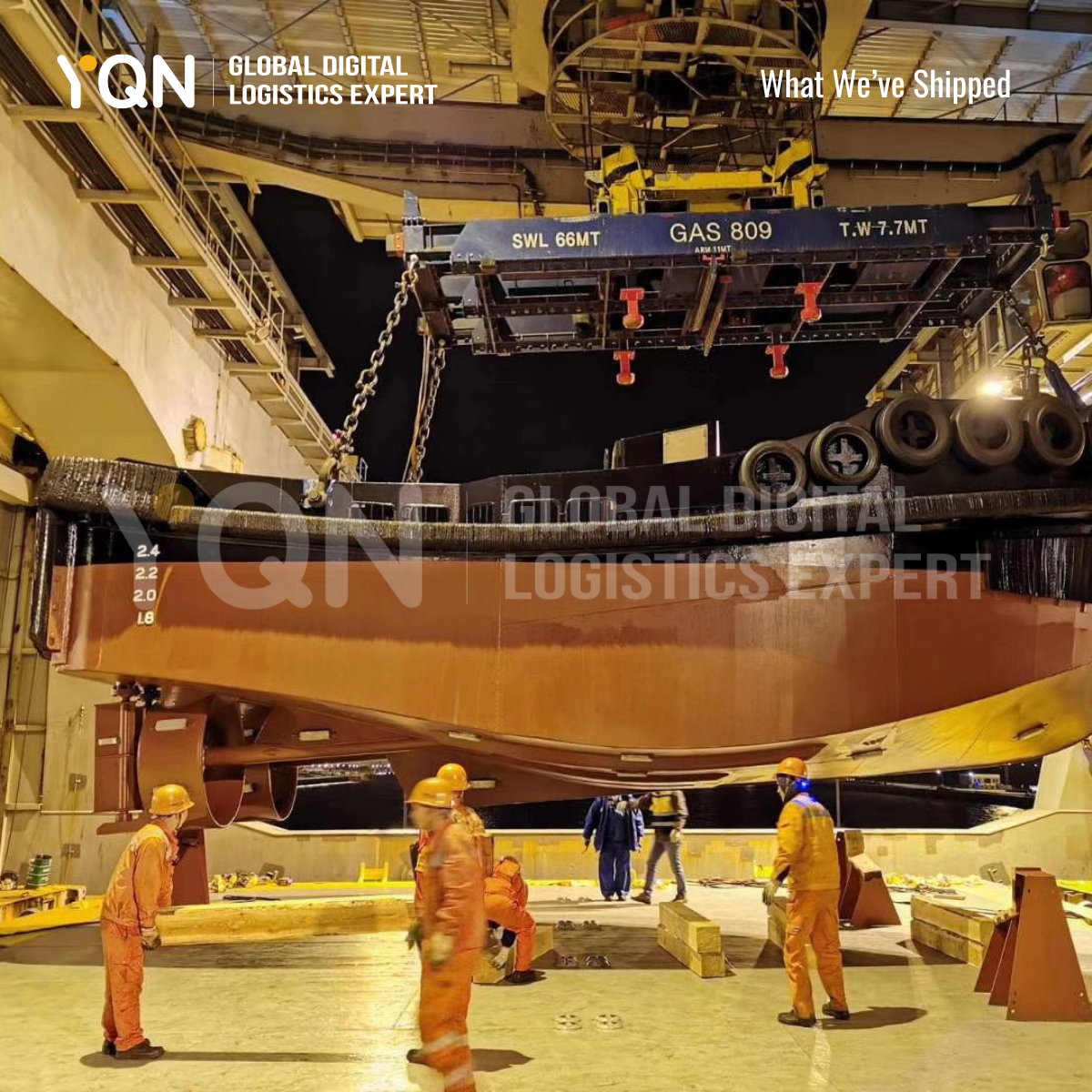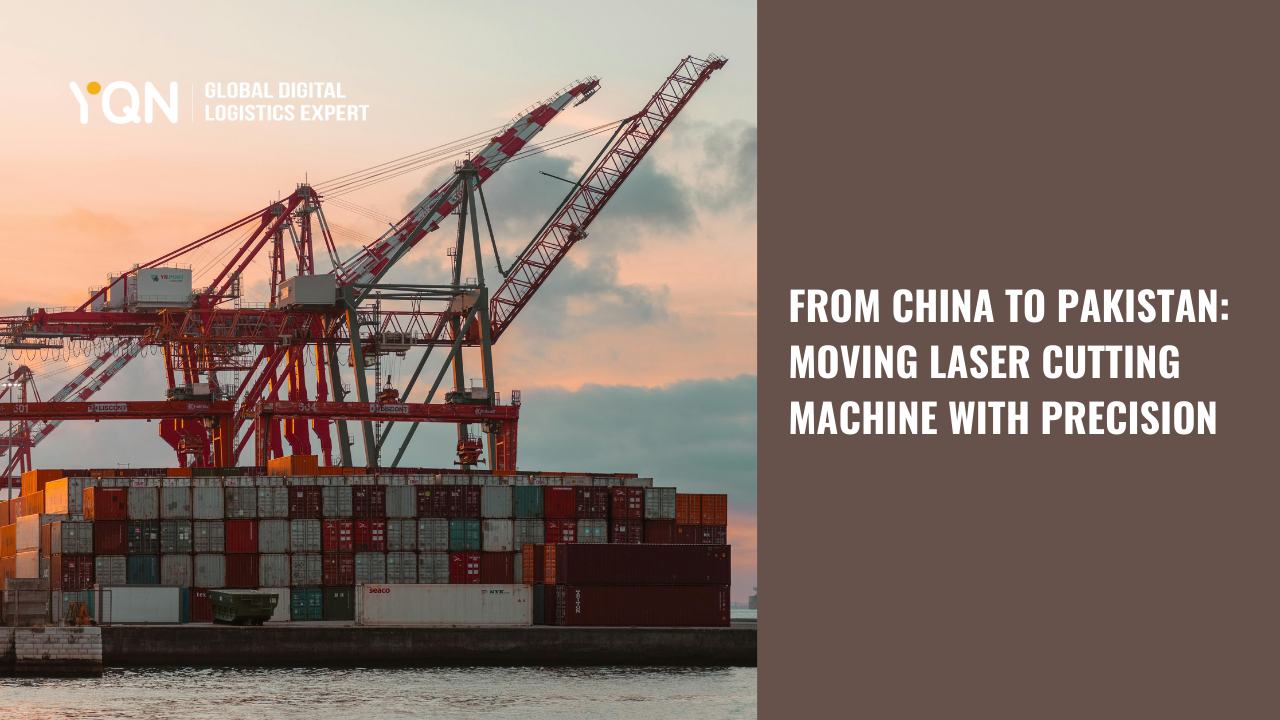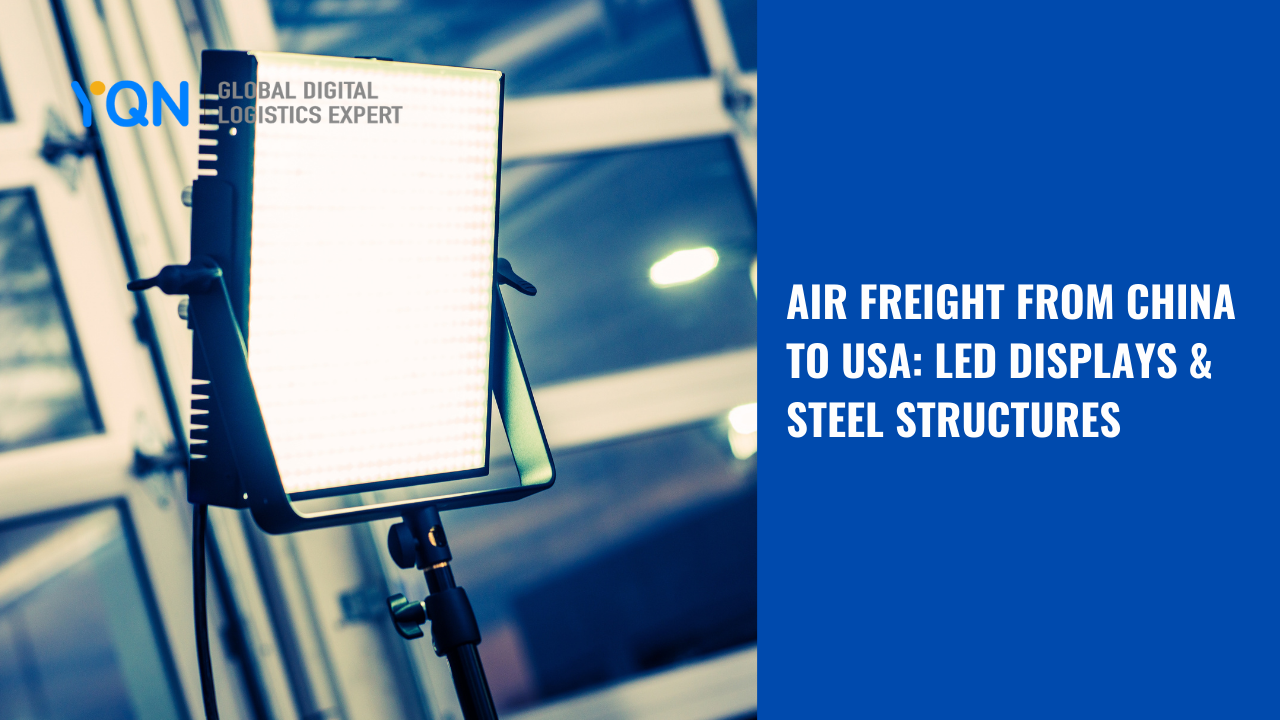How We Shipped Oversized Workboat Hulls from China to Canada
YQN Operation Team | 2025.07.09 | info@yqn.com
Shipping oversized cargo across the Pacific is never just about capacity — it's about coordination, timing, and technical expertise. Recently, our team successfully handled a breakbulk shipping project involving the transport of workboat hulls from Shanghai, China to New Westminster Terminal in Canada, overcoming the unique challenges associated with freight from China to Canada.
Let’s take a closer look at how this complex project unfolded — and what it takes to move large, heavy, and irregular cargo across oceans.
What Are Workboat Hulls — and Why Are They Difficult to Ship?
Workboat hulls form the foundational structure of utility vessels used in ports, offshore platforms, and inland waterways. These boats are essential in industries like construction, oil and gas, marine transport, and dredging.
But shipping workboat hulls is no easy task. In this case:
- The total shipment volume reached 800 CBM
- The heaviest single unit weighed 45 tons
- The hulls were non-stackable, irregularly shaped, and too large for containers
This type of project required breakbulk shipping — a method where cargo is loaded individually rather than in containers — and demanded specialized handling at every step.

About New Westminster Terminal, Canada
Located on the Fraser River in British Columbia, New Westminster Terminal is a key gateway for handling breakbulk and project cargo in Western Canada. It offers:
- Deepwater access suitable for large vessels
- Specialized equipment for lifting and discharging oversized and heavy freight
- Efficient connections to rail and highway networks for inland delivery
Its infrastructure makes it ideal for receiving complex ocean freight shipments like this one from China.
Key Challenges in Oversized Cargo Shipping
Shipping large industrial equipment like workboat hulls involves more than just booking a vessel. Here's what makes these projects complex:
- Port space constraints: Finding barge space and terminal capacity in busy hubs like Shanghai can be competitive.
- Customs and documentation: High-value cargo requires accurate declarations, permits, and safety certifications.
- Handling and lifting: Hulls of this size need specialized cranes and precise coordination.
- Transit visibility: For high-stakes cargo, clients demand real-time tracking and updates at each milestone.
For shippers comparing sea freight from China to Canada prices, it’s important to note that oversized cargo incurs additional costs — including custom lifting equipment, non-standard handling, and extended port processing times.
How the Project Was Executed
With these variables in mind, our team delivered the shipment through a tailored freight forwarding strategy designed for breakbulk logistics:
- Arranged barge transport in Shanghai to move the cargo from factory to port
- Completed all export documentation and certifications in advance
- Coordinated with breakbulk carriers and stevedores for safe loading
- Enabled real-time cargo tracking across every leg of the journey
The shipment arrived on time and damage-free, ready for final outfitting in Canada.
Planning a Heavy or Out-of-Gauge Shipment?
Whether you're moving marine vessels, industrial machinery, or steel structures, oversized cargo requires an experienced partner in project cargo shipping.
At YQN, we offer:
- Breakbulk and heavy lift logistics
- Freight from China to Canada, including custom solutions for ocean routes
- Support in calculating sea freight from China to Canada price, including cost factors for complex cargo
- End-to-end visibility, including port coordination, inland delivery, and customs clearance
Contact us today at info@yqn.com to start planning your next oversized or complex shipment.







